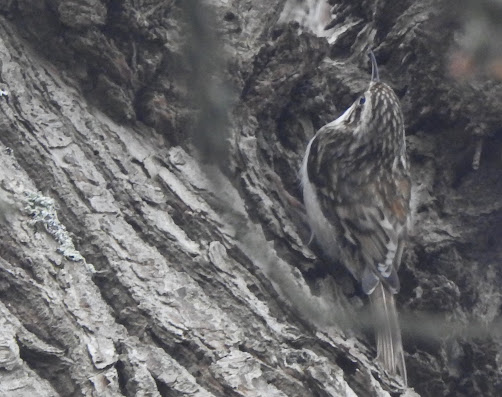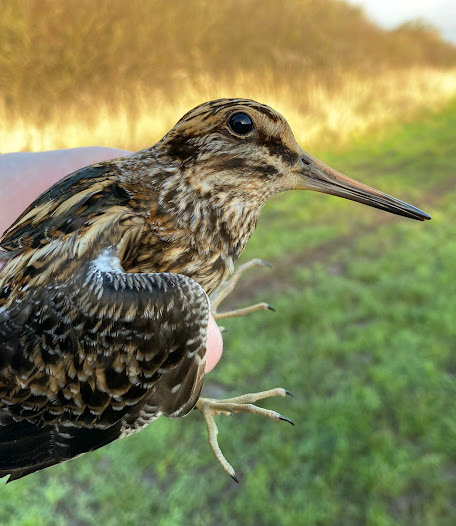What a gloomy, foggy week it's been. I did get out a couple of times over Christmas but my stumbling around in the fog didn't amount to much and was totally eclipsed by an excellent visit to Morton Bagot today.
The day began with a nice surprise. Dave's brother Paul, who used to put us up on our regular visits to Filey in the 1990s, was visiting from Yorkshire. It was only his second visit to our patch and I felt I needed to warn him it would probably be a waste of time. I needn't have worried though.
The Tawny Owl was showing well, and was quite oblivious to the three sets of bins grilling it. A good start.
We carried on, probably intending to walk across the marsh in the hope of kicking up a Jack Snipe or two. However, we were distracted by three ducks flying towards the flash field. They were distant, but appeared to be two Mallard and a Mandarin. The latter would be a patch year-tick, so I persuaded the others to cut out the marsh and head for the flash.
On the way we flushed a Little Egret and a Green Sandpiper, and on arrival discovered a small flock of Lapwings on the furthest flash. There seemed to be more small gulls than usual on the nearest flash so we headed for the first viewing point. From here Dave quickly alerted us to the presence of a drake Pintail, a drake Shoveler, and the drake Mandarin. The Pintail was my first in the 10 k circle this year, and possibly only the third adult drake I have ever seen here. I was ecstatic.
Also present were at least 15 Teal, 44 Black-headed Gulls and beyond the flash about 40 to 50 Greylag Geese, while a Mute Swan flew over.
We ended up walking straight back to the car, but still added a fly-over Yellowhammer, three Snipe, and a Stonechat before we were done.
We were at pains to impress upon Paul that this was a good visit, and he certainly enjoyed our enthusiasm.
PS: John Chidwick twitched the birds in the late afternoon and discovered a female Pintail and a Wigeon in addition to the birds we'd seen. Perhaps we weren't as thorough as we thought.
This will probably be my last visit this year so I suppose I should reflect on the year just gone. Today's Pintail brought my circle total to 137, which is the lowest since I've been doing it. Previous years have tallied above 140.
However there have been some belters this year.
Highlights were the party of six Common Cranes at Morton Bagot in early April, a Yellow-browed Warbler at Earlswood in October, and a Cattle Egret at Arrow Valley lake and Mappleborough Green in April.
Although I totally missed out on the Waxwing influx last winter, I cashed in on the mini Hawfinch invasion this autumn, seeing birds at both Morton Bagot and from my garden at Winyates East. Also new for the garden was a party of migrating Whooper Swans in late October, with a further eleven in November.
Water-levels were high for much of the year making it exceptionally poor for waders. I failed to see any Black-tailed Godwits, Redshank, Ringed Plovers, or Whimbrels for example, and only managed one Dunlin (over Earlswood), and one Greenshank (Middle Spernal).
Earlswood's birders turned up a decent spread of less regular gulls and terns, most of which I twitched. I did miss a Knot there (it had nowhere to land), and also migrating Osprey and Marsh Harrier. Next year maybe.
Roll on 2025.

















































